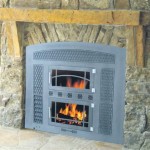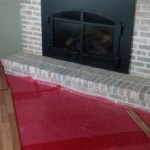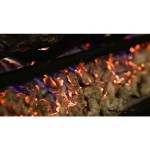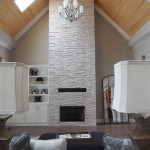Selecting the Right Tile for Fireplace Surrounds
Fireplaces serve as focal points within homes, offering both warmth and aesthetic appeal. The fireplace surround, the decorative border framing the firebox, plays a crucial role in enhancing the overall design. Tile is a popular material choice for fireplace surrounds due to its durability, versatility, and wide range of available styles. Selecting the appropriate tile requires careful consideration of several factors, including heat resistance, design compatibility, installation requirements, and maintenance needs.
Understanding Heat Resistance and Material Properties
A primary concern when choosing tile for fireplace surrounds is its ability to withstand high temperatures. The area directly surrounding the firebox is exposed to significant heat, and not all tile materials are suitable for this application. Certain types of tile can crack, discolor, or even become a fire hazard if subjected to extreme heat. Therefore, selecting tiles specifically rated for fireplace use is essential.
Porcelain tile is a highly recommended option for fireplace surrounds due to its exceptional heat resistance. Porcelain is fired at high temperatures during manufacturing, resulting in a dense and durable material that can withstand significant heat without damage. It also has a low water absorption rate, making it resistant to staining and cracking. Porcelain tiles are available in a wide variety of colors, patterns, and textures, offering numerous design possibilities.
Ceramic tile is another option, although it is generally less heat resistant than porcelain. Ceramic tiles are also fired, but at lower temperatures, making them slightly more susceptible to cracking or discoloration under intense heat. If considering ceramic tile, it is crucial to select tiles specifically designed for fireplace surrounds and to ensure proper installation with heat-resistant mortar and grout.
Natural stone tiles, such as granite, slate, and marble, can also be used for fireplace surrounds. These materials offer a natural and elegant aesthetic, but their heat resistance varies depending on the specific type of stone. Granite is generally the most heat-resistant natural stone, followed by slate. Marble, while beautiful, is more porous and susceptible to staining and etching from heat and acidic substances. When using natural stone, it is essential to seal the tile properly to protect it from moisture and staining.
It is always advisable to consult with a tile professional or fireplace installer to determine the most suitable tile material based on the specific fireplace design and heat output.
Considering Design Compatibility and Aesthetic Goals
Beyond heat resistance, the aesthetic compatibility of the tile with the overall design of the room is paramount. The fireplace surround should complement the existing décor, enhancing the room's style and creating a cohesive look. The choice of tile color, pattern, texture, and size can significantly impact the overall visual appeal of the fireplace.
For a traditional or classic aesthetic, natural stone tiles such as marble or travertine can create a timeless and elegant look. These materials often feature natural variations in color and veining, adding character and depth to the fireplace surround. Subway tiles, arranged in a traditional brick pattern, are another popular choice for traditional fireplaces.
For a more modern or contemporary design, large-format porcelain tiles can create a sleek and minimalist look. These tiles often feature clean lines and neutral colors, such as gray, white, or black. Geometric patterns, such as herringbone or chevron, can also add a modern touch to the fireplace surround.
For a rustic or farmhouse-style design, natural stone tiles such as slate or river rock can create a warm and inviting atmosphere. Reclaimed brick or wood-look tiles can also be used to add a touch of rustic charm to the fireplace surround. Consider incorporating natural textures and earthy tones to enhance the rustic aesthetic.
The size of the tiles should also be considered in relation to the size of the fireplace and the room. Larger tiles can create a more seamless and modern look, while smaller tiles can add detail and texture. It is important to choose tiles that are proportional to the fireplace surround and the surrounding space.
The grout color also plays a significant role in the overall design. Matching grout to the tile color can create a seamless look, while contrasting grout can highlight the individual tiles and add visual interest. Consider the overall aesthetic of the room and choose a grout color that complements the tile and the surrounding décor.
Installation Considerations and Best Practices
Proper installation is crucial for ensuring the longevity and performance of the tile fireplace surround. Incorrect installation can lead to cracking, loosening, or even failure of the tile. It is highly recommended to hire a qualified tile installer with experience in fireplace surround installations. The installation process involves several key steps, including surface preparation, mortar application, tile setting, grouting, and sealing.
Surface preparation is essential for ensuring proper adhesion of the tile. The surface must be clean, dry, and level. Any existing paint, wallpaper, or adhesive must be removed. If the surface is uneven, it may need to be leveled with a self-leveling compound or a cement backer board. A cement backer board provides a stable and moisture-resistant surface for tile installation.
The appropriate mortar should be selected based on the type of tile and the substrate. Thin-set mortar is commonly used for tile installations. It is important to choose a mortar specifically designed for fireplace surrounds, as it will be formulated to withstand high temperatures. The mortar should be mixed according to the manufacturer's instructions and applied evenly to the surface using a notched trowel.
The tiles should be carefully set in the mortar, ensuring proper spacing and alignment. Tile spacers can be used to maintain consistent spacing between the tiles. The tiles should be pressed firmly into the mortar to ensure proper adhesion. Any excess mortar should be wiped away immediately.
Once the mortar has cured, the grout can be applied. Grout fills the spaces between the tiles and provides a waterproof seal. The grout should be mixed according to the manufacturer's instructions and applied evenly to the tile surface using a grout float. Any excess grout should be wiped away with a damp sponge.
After the grout has cured, the tile and grout should be sealed to protect them from moisture and staining. A penetrating sealer is recommended for natural stone tiles, while a surface sealer can be used for porcelain and ceramic tiles. The sealer should be applied according to the manufacturer's instructions. Regular cleaning and maintenance can help to prolong the life of the tile fireplace surround. Avoid using harsh chemicals or abrasive cleaners, as they can damage the tile and grout. Wipe up spills immediately to prevent staining.
In some cases, especially with new construction or significant renovations involving gas or wood-burning fireplaces, local building codes may require specific clearances from combustible materials. This is particularly important around the firebox opening and any exposed wood framing. Consult with a qualified building inspector or fireplace professional to ensure compliance with all applicable codes and regulations.
Finally, consider the design of the hearth, the floor area directly in front of the fireplace opening. The hearth is typically made of a non-combustible material and extends a certain distance into the room to protect the flooring from sparks and embers. The tile used for the fireplace surround can often be extended onto the hearth for a cohesive and unified design. Ensure the tile chosen for the hearth is durable enough to withstand foot traffic and potential dropping of fireplace tools.

14 Fresh Designs For Tiled Fireplaces Bob Vila

Fireplace Tiles Classique Floors Tile Portland Or
Fireplace Tile Surround 5 Decorative Mantel Tiles 2024

Fireplace Tiles Fire Surround Hearth

Planning A Tile Fireplace Budgeting Design Diy Vs Pro

Remodeling A Fireplace With Tile
Fireplace Tile Surround 5 Decorative Mantel Tiles 2024

Warm Up With Fireplace Tile Ideas Home Remodel Surround

How To Tile A Fireplace Surround And Hearth Build Basic
Trend Watch Tile Fireplace Surrounds








